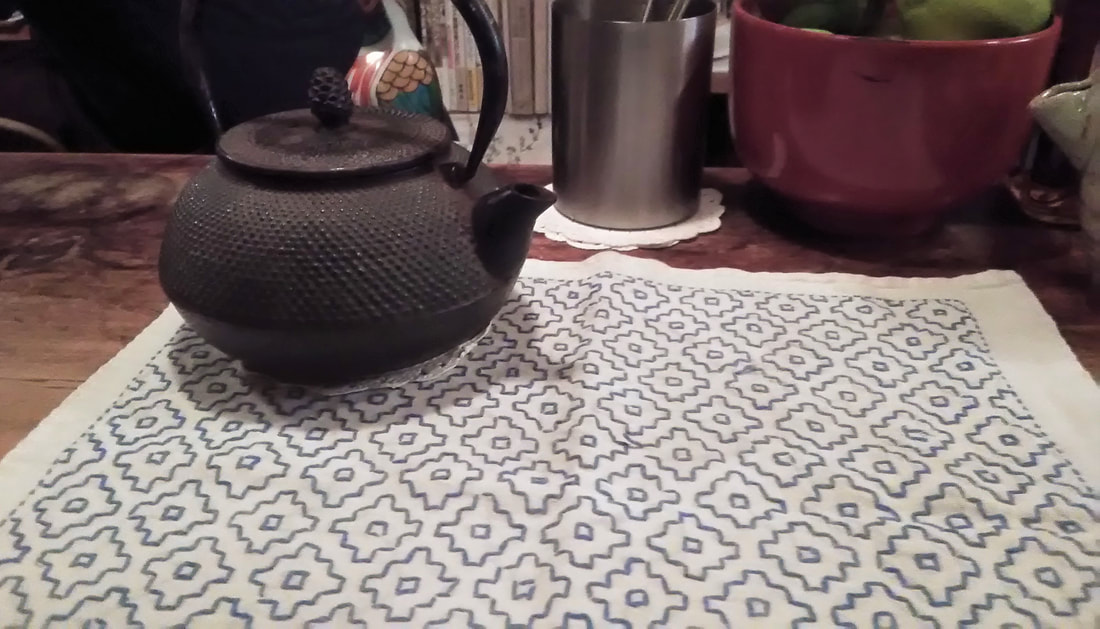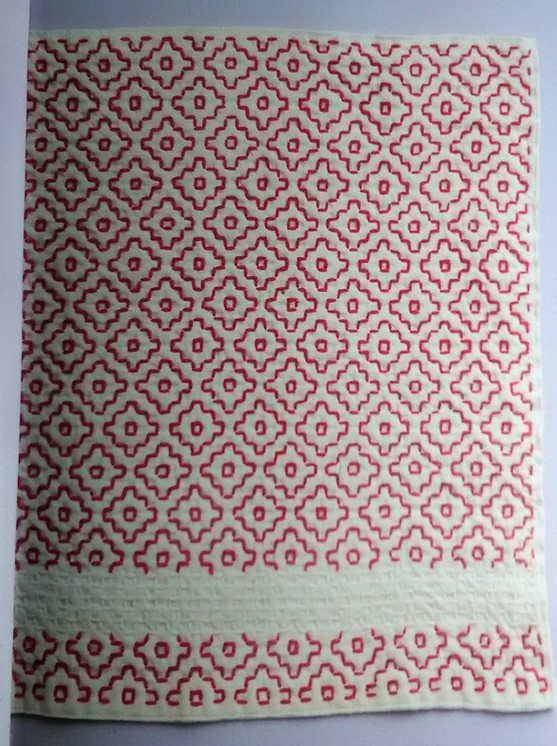
Where has the time gone? While sashiko is never far from my mind, in this busy modern life it takes some planning to get me sitting in front of the computer long enough to actually write about it.
One tidbit of sashiko related news I wanted to tell you about was the announcement of the uniform for the Japanese soccer team in next year’s World Cup… featuring sashiko in the design. Next year will mark the twentieth anniversary since Japan first qualified to compete in the World Cup, so the concept is that sashiko will be the thread that connects up history. Isn’t that a nice idea! Speaking of sashiko connecting people, you may remember I previously wrote about visiting a tiny backstreet bar in Tokyo where the owner showed me hanafukin made by her 94-year-old mother-in-law (turns out it was mother-in-law, not mother). Well, the other day when I paid another visit I had a wonderful surprise; apparently the mother-in-law was so thrilled to hear about my visit, she sent me a little gift, two hanafukin that she had made. I was moved to tears, as never in my life did I expect to receive a hanafukin from my own mother, let alone anyone else’s! Another lovely surprise was that she had left me some other hanafukin to look at, one of which happened to be exactly the same pattern as the piece I was carrying around with me to work on, and my topic for today kaki no hana (persimmon flower).
This stitch is one kind of hitomezashi (one stitch sashiko), which you may recall I wrote before was traditionally often used for practical purposes, such as clothing or reinforcing material, because of the strength that the dense stitching imparts. Hitomezashi is typical of Shonai sashiko, one of the three major styles of sashiko. The Shonai region is Yamagata prefecture in northern Japan, a mountainous region, cold in winter, that faces the Japan Sea. The story goes that ships carried out regional products such as safflower and rice, and made the return journey with their holds filled with cotton and old clothing from the warmer regions they visited where cotton grew. Women would get busy stitching the cloth to make jackets, footwear and other useful items.
Compared to moyozashi (pattern stitches), I find hitomezashi easy in the sense that you don’t have to think about the length of your stitches or making them fit them the pattern, because each stitch is simply one side of a square in the grid. The only tricky thing is that you have to get the order of stitching right, if you don’t the pattern won’t appear. Transferring the pattern is simple too; just draw or trace a grid onto the fabric and off you go. The recommended size of the squares on the grid is 5mm, but they can be up to a centimeter. Any longer and the stitching will stick up or catch. Here’s some examples of kaki no hana stitching I found in my collection of sashiko books that may inspire you! (*Amazon Japan affiliate links included)
Above two images from Tohoku no Sashiko (Sashiko from the Tohoku region), Nihon Vogue-sha, 2016
Kawaii Hari Shigoto: Sashiko no Tezukurikomono (Charming Needlework: Small Handmade Sashiko Items), Boutique-sha, 2017
3 Comments
|
Watts SashikoI love sashiko. I love its simplicity and complexity, I love looking at it, doing it, reading about it, and talking about it. Archives
September 2022
Categories
All
Sign up for the newsletter:
|








 RSS Feed
RSS Feed



